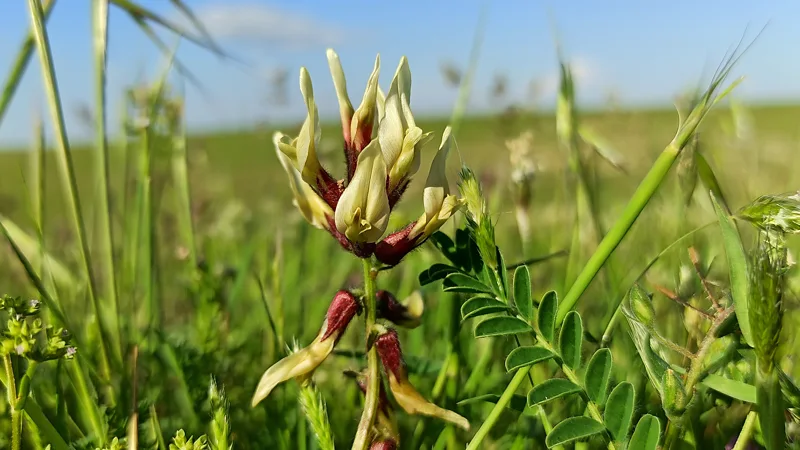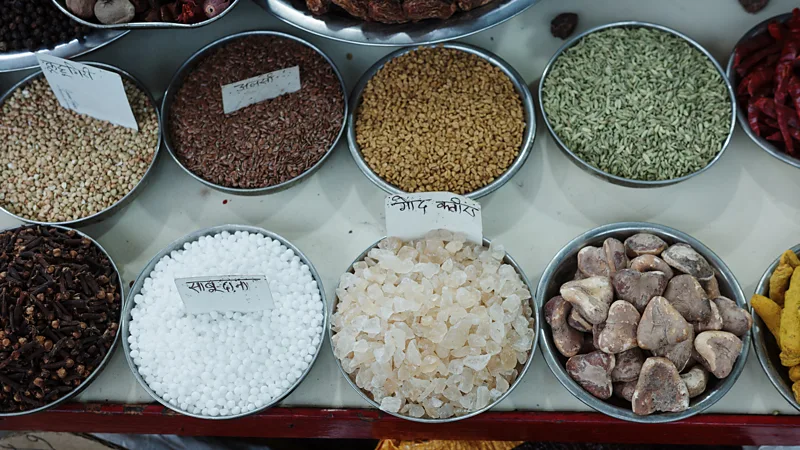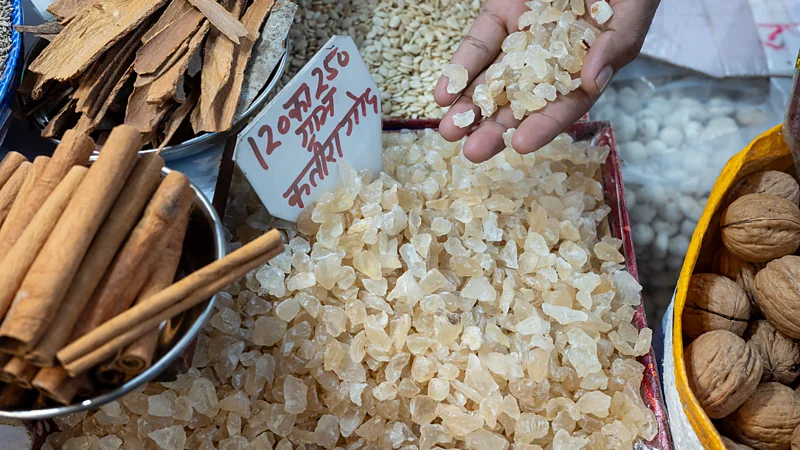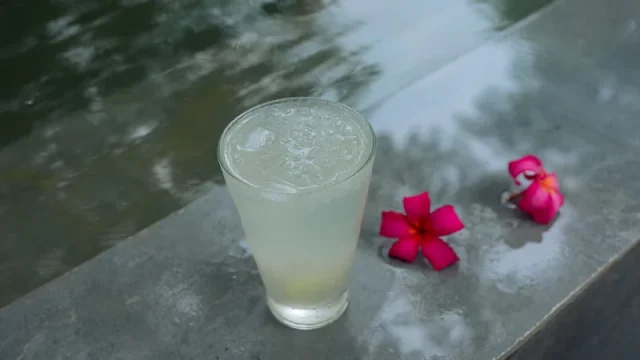Introduction
In the sweltering heat of India‘s longest recorded heatwave, locals have turned to traditional cooling beverages to find relief. Among these, gond katira, also known as tragacanth gum, has gained significant attention for its natural cooling properties. This guide explores the benefits its cultural significance, and how it is being revived as a remedy for the scorching summer heat.
Discovering in Old Delhi
During a visit to Khari Baoli, Asia’s largest wholesale spice market in old Delhi, the sight of small, uneven, translucent crystals labeled “Rs 120 for 250g, Gond Katira” sparked my curiosity. These crystals, known as gond katira, are derived from the sap of the Astragalus genus plants, found primarily in Iran and Turkey.

The Origins and Benefits
Historical and Medicinal UsesIt
It has a rich history of use in traditional medicine, particularly in Unani practices. According to Dr. Syed MM Ameen, a Unani physician in Chennai, It has been utilized for centuries to cool the body, improve skin texture, enhance liver function, and boost immunity. Its benefits are documented in ancient texts like the Canon of Medicine by Avicenna and the National Formulary of Unani Medicines.

Nutritional and Industrial Applications
Tragacanth gum contains tragacanthin, a component that forms a gel-like structure when mixed with water. This property makes it a valuable thickener and emulsifier in the food industry. It is commonly added to baking mixes, sauces, fruit juices, and meats. Additionally, it has applications in the pharmaceutical industry due to its antibacterial, anti-cancer, anti-inflammatory, and antioxidant properties.
In Indian Households
A Traditional Remedy for the Heat
It has been a household staple in India, particularly in regions like Delhi, Punjab, Andhra Pradesh, and Tamil Nadu. During this year’s unprecedented heatwave, the popularity of it surged, with Google searches for the term peaking between May 19-25, when temperatures soared to 41-45°C.
Cooling Summer Beverages
In many Indian homes, It is added to various summer beverages for its cooling effects. It is commonly used in sherbet, milkshakes, lassi, and desserts like kheer. Harjeet Kaur, a freelance writer from Vijayawada, recalls her mother preparing a refreshing drink with it, Rooh Afza, water or milk, sugar, and ice. This tradition continues, with Kaur enjoying the cooling drink every summer morning.
How to Prepare Gond Katira Jelly
To make a jelly, rinse a tablespoon of the crystals and soak them in 300 ml of water for at least four hours or overnight. The crystals will swell into a white jelly, which can be added to drinks and desserts.

The Rising Popularity
Social Media Influence
The rise of social media has played a crucial role in reviving interest in it. Food bloggers, dieticians, and fitness enthusiasts have shared recipes for summer drinks and desserts featuring gond katira, contributing to its growing popularity. Chaitanya Jaggi, a spice shop owner in Khari Baoli, notes a significant increase in sales of it between March and August.
Health Benefits and Modern Uses
Nutritional consultant Sangeeta Khanna highlights gond katira’s prebiotic properties, which promote gut health. Khanna incorporates gond katira into bubble tea, replacing sago pearls with the jelly. Despite its modern adaptations, gond katira remains an underappreciated ingredient that was once common in north Indian households until the mid-1980s.
Gond Katira in Street Food and Traditional Recipes
Regional Variations
It is a popular ingredient in street food across India. In Punjab, it is added to shikanji (lemonade) sold by street vendors. In Tamil Nadu, it is known as badam pisin and used in jigarthanda, a milk-based beverage. In Andhra Pradesh, it is called katora and is included in sugandhi katora, a drink made with nannari syrup, basil seeds, and water, soda, or milk.
Culinary Innovations
Entrepreneurs like Abhilasha Jain are introducing gond katira to a wider audience through culinary events. Jain, who rediscovered gond katira after a bout of heatstroke, now uses it regularly in her catering service. She serves gond katira sherbet with different flavors like rose, khus, and sandalwood, impressing guests at high-end events.
Availability and Market Trends
It can be found both online and in local grocery stores across India. Prices range from Rs 250 to 500 per kg, depending on quality and crystal size. The increased demand for gond katira, driven by social media awareness, reflects a broader trend of Indian consumers seeking natural and traditional remedies.
Gond Katira Lemonade Recipe
Ingredients:
- 2 limes
- 1 tbsp sugar or 2 tbsp jaggery
- 1/2 tsp black salt
- 1 tbsp gond katira
- A few mint leaves
- Water
Method:
- Rinse and soak a tablespoon of gond katira crystals in 300 ml of water overnight. The crystals will turn into a white jelly. Rinse again if necessary.
- Squeeze lime juice into a glass. Add black salt and sugar or jaggery to taste. Mix well with chilled water.
- Add 1-2 tablespoons of the gond katira jelly to the drink. Garnish with lime slices and mint leaves.
Conclusion
As India’s summers become increasingly hot, traditional remedies like gond katira offer a natural, affordable, and delicious way to cool down. The revival of this humble ingredient, driven by social media and a growing interest in natural foods, highlights the enduring value of traditional wisdom in modern times. Whether enjoyed in a refreshing sherbet or a contemporary bubble tea, gond katira continues to provide much-needed relief from the scorching heat.











